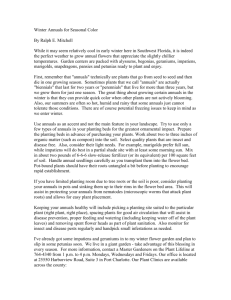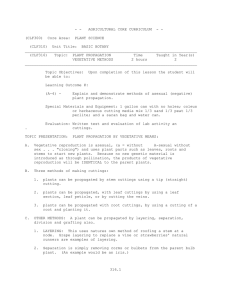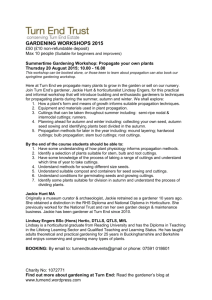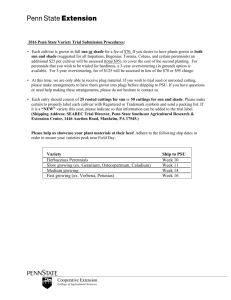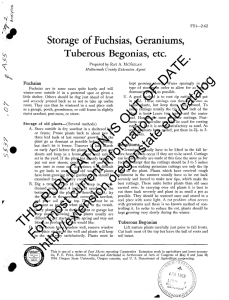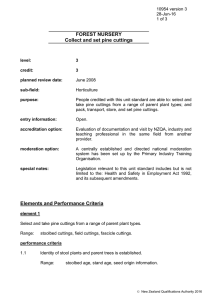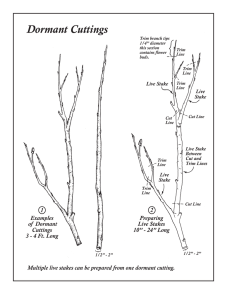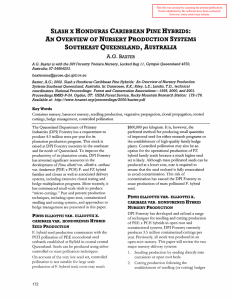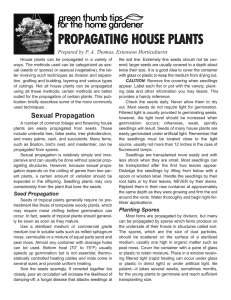Akron Beacon Journal, OH 10-07-06 Overwinter annuals for use next spring
advertisement
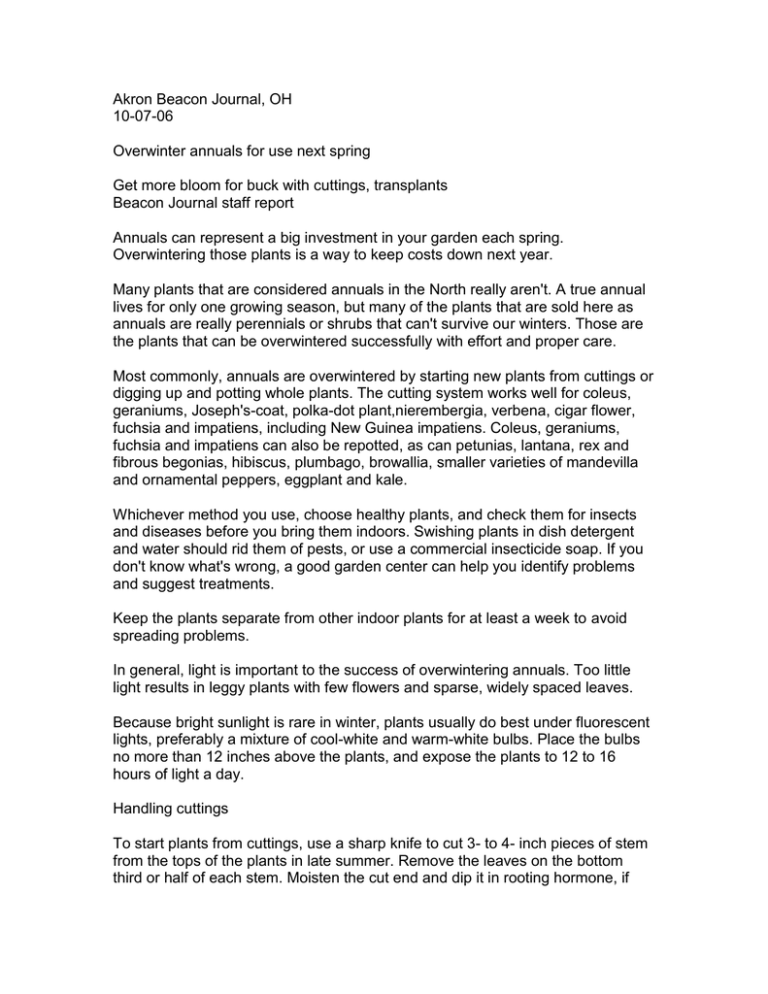
Akron Beacon Journal, OH 10-07-06 Overwinter annuals for use next spring Get more bloom for buck with cuttings, transplants Beacon Journal staff report Annuals can represent a big investment in your garden each spring. Overwintering those plants is a way to keep costs down next year. Many plants that are considered annuals in the North really aren't. A true annual lives for only one growing season, but many of the plants that are sold here as annuals are really perennials or shrubs that can't survive our winters. Those are the plants that can be overwintered successfully with effort and proper care. Most commonly, annuals are overwintered by starting new plants from cuttings or digging up and potting whole plants. The cutting system works well for coleus, geraniums, Joseph's-coat, polka-dot plant,nierembergia, verbena, cigar flower, fuchsia and impatiens, including New Guinea impatiens. Coleus, geraniums, fuchsia and impatiens can also be repotted, as can petunias, lantana, rex and fibrous begonias, hibiscus, plumbago, browallia, smaller varieties of mandevilla and ornamental peppers, eggplant and kale. Whichever method you use, choose healthy plants, and check them for insects and diseases before you bring them indoors. Swishing plants in dish detergent and water should rid them of pests, or use a commercial insecticide soap. If you don't know what's wrong, a good garden center can help you identify problems and suggest treatments. Keep the plants separate from other indoor plants for at least a week to avoid spreading problems. In general, light is important to the success of overwintering annuals. Too little light results in leggy plants with few flowers and sparse, widely spaced leaves. Because bright sunlight is rare in winter, plants usually do best under fluorescent lights, preferably a mixture of cool-white and warm-white bulbs. Place the bulbs no more than 12 inches above the plants, and expose the plants to 12 to 16 hours of light a day. Handling cuttings To start plants from cuttings, use a sharp knife to cut 3- to 4- inch pieces of stem from the tops of the plants in late summer. Remove the leaves on the bottom third or half of each stem. Moisten the cut end and dip it in rooting hormone, if desired, then insert the cut end into a small container filled with damp perlite, vermiculite or coarse sand. Place the container out of direct sunlight, and water it as needed to keep the growing medium moist. In about six weeks, when the cuttings have developed roots that are a half-inch to an inch long, transplant them into 4-inch pots filled with a commercial houseplant-potting mix. Move them to a sunny window and turn them frequently so they don't get lopsided, or place them under artificial lights. To repot whole plants, cut the tops back by half, then dig them up with as much of their root systems as you can. Remove as much garden soil from the roots as possible without seriously damaging them, then pot each plant in a container filled with a houseplant-potting mix. The container should be big enough to hold all the roots comfortably. Feed the transplants regularly with plant food and water them as you would houseplants. Plants grown from cuttings and those transplanted to pots will benefit from pinching -- regularly removing growing tips. This encourages fuller growth. Once the danger of frost has passed in the spring, cut plants back to about onethird their height and transplant outdoors. Sources: Natorp's Inc., a wholesale and retail nursery business in southwestern Ohio; J. Franklin Styer Nurseries, Concordville, Pa.; Don Janssen, extension educator, University of Nebraska-Lincoln Extension; and Sherry Rindels, Department of Horticulture, Iowa State University.

